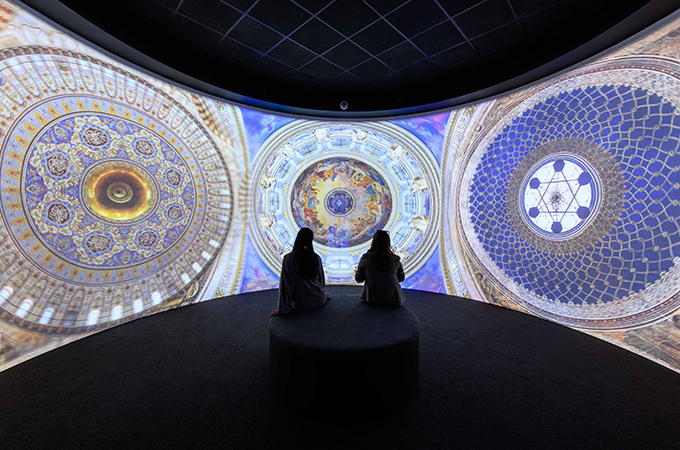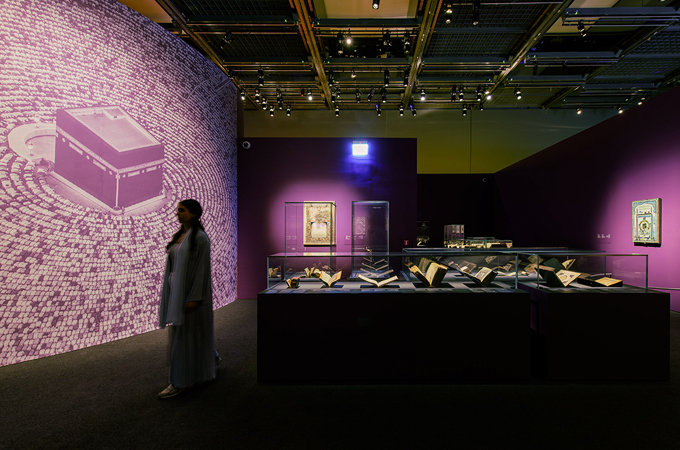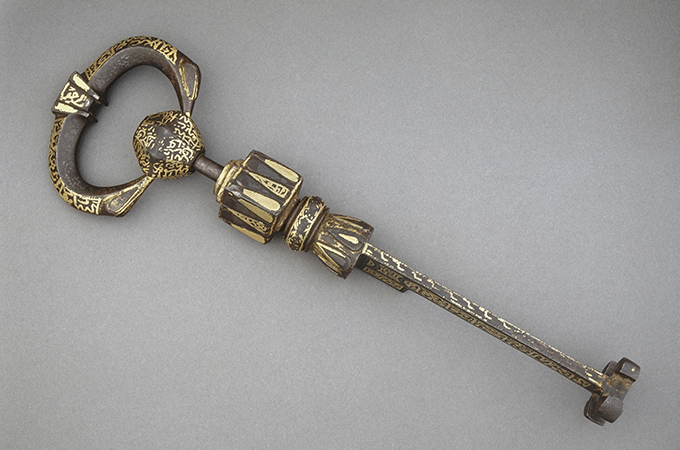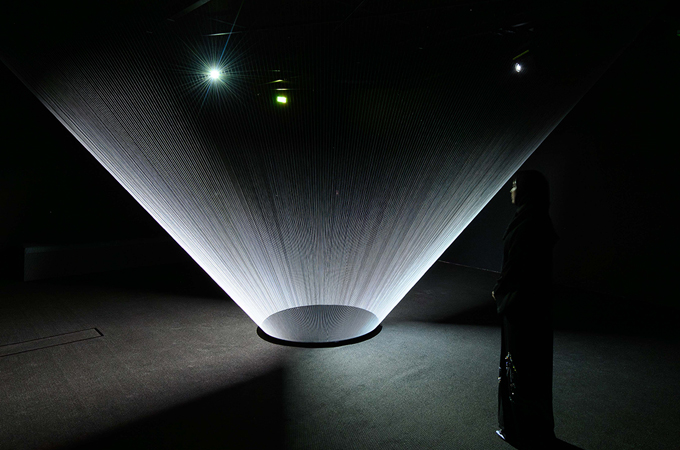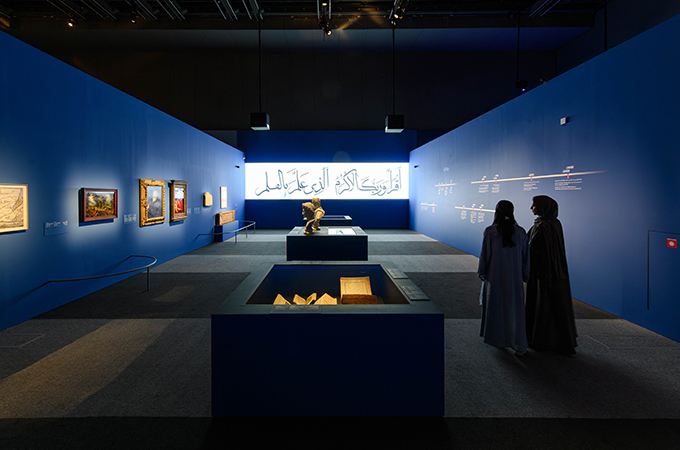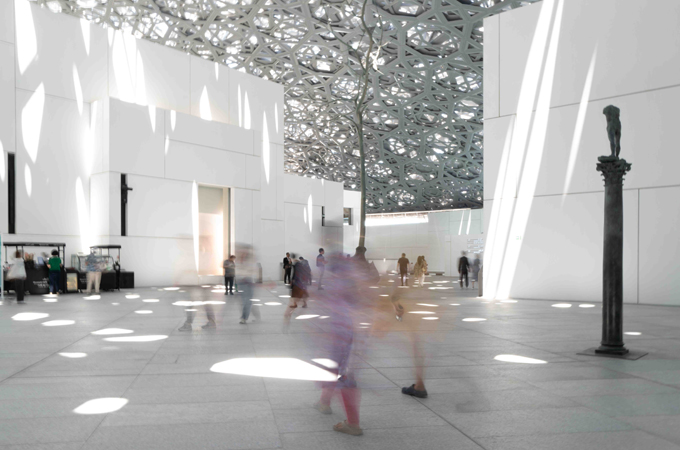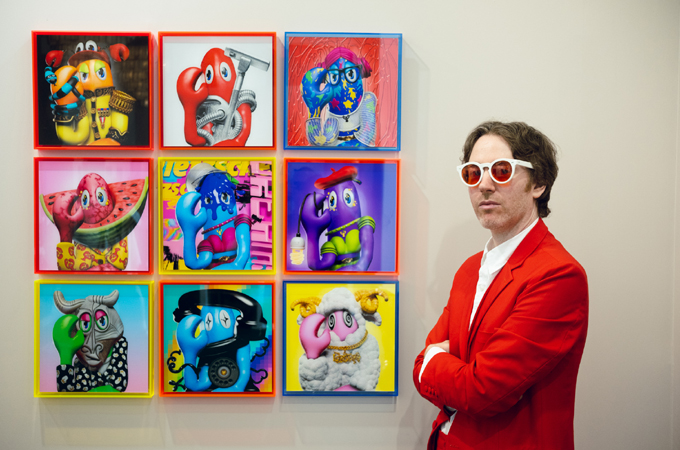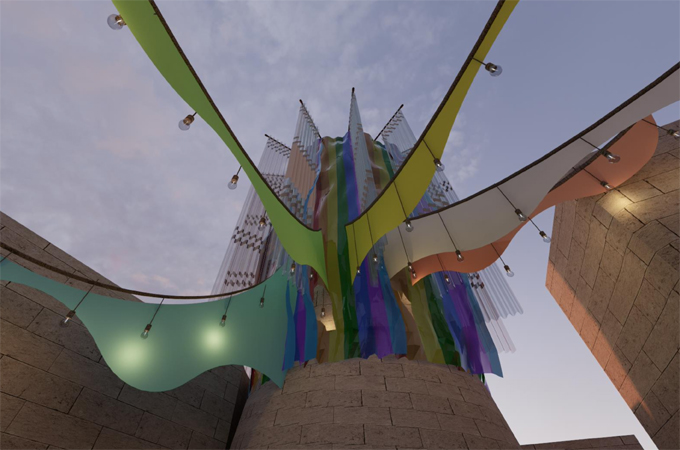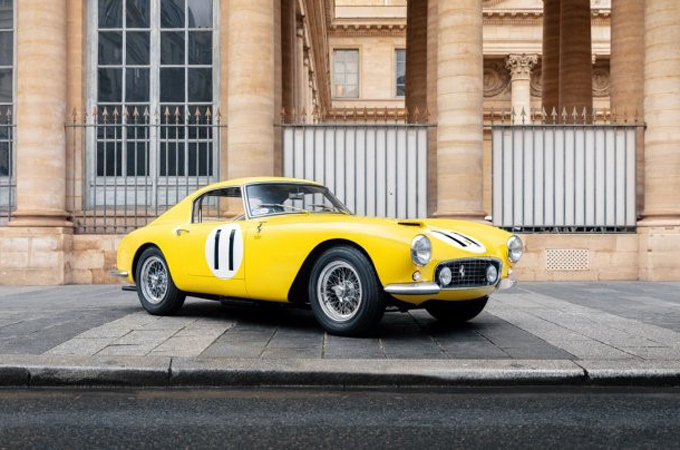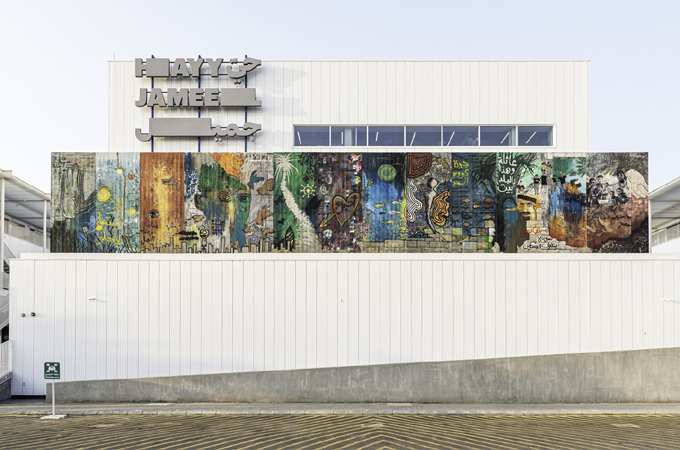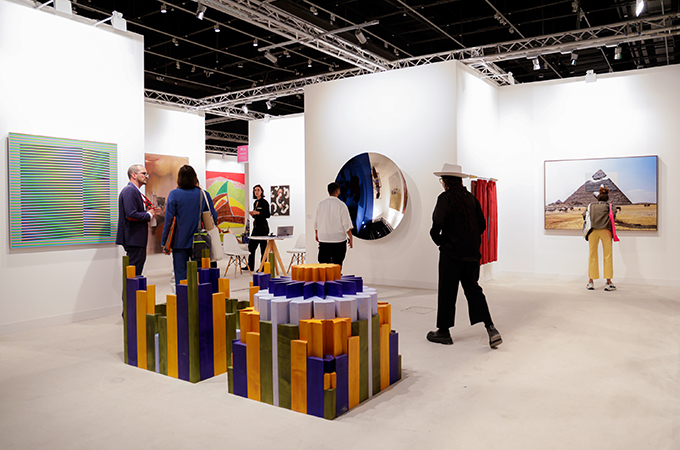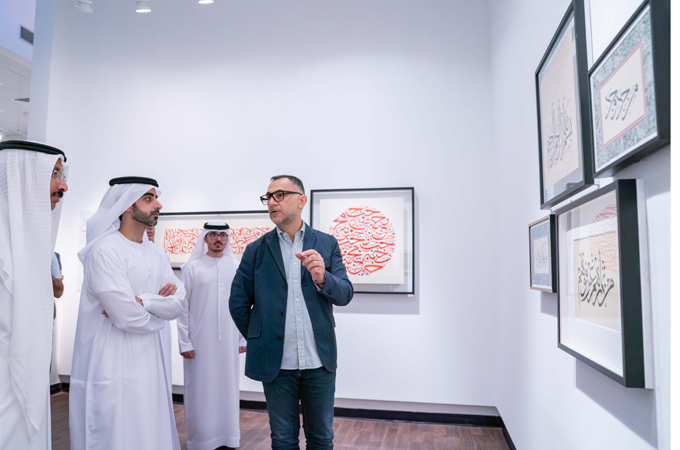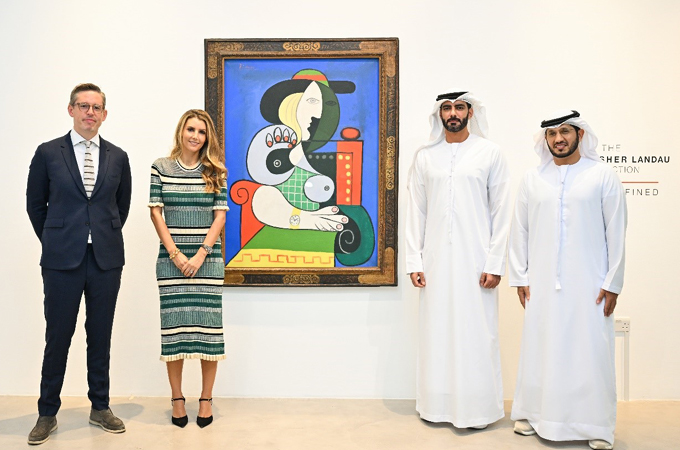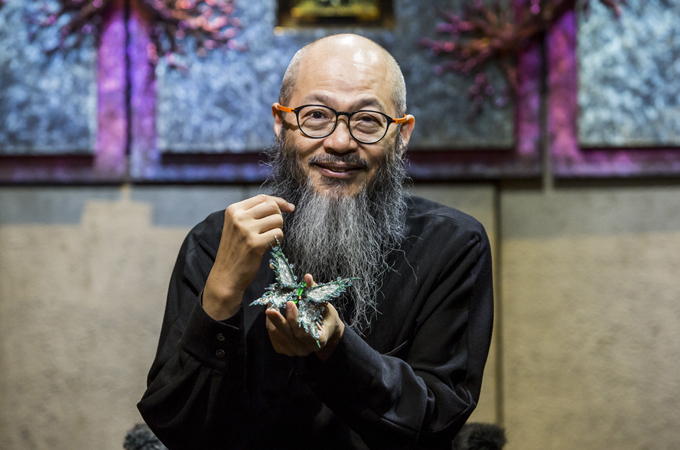Autumn 2023
Some of the oldest texts of the three monotheistic religions are being showcased in Louvre Abu Dhabi until January 14, 2024 under the title ‘Letters of Light’.
With more than 240 works on display, visitors will discover important and beautiful manuscripts of the Quran, Bible, and Torah as well as artefacts from the collections of the Bibliothèque nationale de France, the Musée du Louvre in Paris and Louvre Abu Dhabi.
These pieces include manuscripts, photographs, graphic arts and three-dimensional objects, textiles and paintings from all over the world.
Held in partnership with Bibliothèque nationale de France and France Muséums, Letters of Light explores the historical context in which the holy books emerged, the way they have been passed down over the years, the scholarly and mystical practices associated with them and their essential role in universal intellectual and artistic history.
The exhibition is curated by Laurent Héricher, Head of the Oriental Manuscripts Department, Bibliothèque nationale de France, and Dr Souraya Noujaim, Director of the Islamic Arts department, Musée du Louvre, and former Director for Scientific, Curatorial and Collections Management at Louvre Abu Dhabi.
Offering a contemporary perspective, the exhibition also showcases a commissioned artwork by Muhannad Shono, The Unseen. The thread-based installation by the Saudi visual artist metaphorically connects the threads of the three religions through a contemplative experience.
Manuel Rabaté, Director, Louvre Abu Dhabi, said: “From exquisite texts like the Souvigny Bible to beautiful paintings such as Giovanni Bellini’s Virgin and Child, and intriguing artefacts like the Key to the Kaaba, this exhibition displays an array of remarkable items to highlight the shared origins of the three monotheistic religions – each an embodiment of beauty and knowledge. As one journeys through this captivating showcase, they’ll uncover how these three faiths share profound roots, enriching their understanding beyond personal beliefs.”
Héricher said: “Presenting some of the oldest and most important books and manuscripts, and extraordinary illuminated and marvellous calligraphy, this exhibition has been created to emphasise the universality of Quranic, biblical, and evangelical messages, as well as the intrinsic ethical dimension of these three religions and their predominant role in universal intellectual and artistic history. This fully aligns with the universal dimension of Louvre Abu Dhabi, a place open to dialogue that brings together different cultures to shed light on these common stories of humanity, transcending civilisations, eras, and places. We hope that this journey to the heart of the spiritual roots of human history invites visitors into a moment of meditation and aesthetic emotion.”
Masterpieces from the exhibition include artworks and manuscripts from Louvre Abu Dhabi’s collection:
• Blue Quran folio, one of the most exquisite ancient copies of the Quran to have survived to the present day. Consisting of seven volumes, the page was probably produced in Kairouan, Tunisia, in the 9th or 10th century. The dark blue page symbolises the celestial universe and the gilded letters the divine light spread by the word of God. A dedicated passage reassembling six pages of the dispersed Blue Quran will be included in the narrative.
• Palimpsest leaf of a Quran (Hijazi style), the script in the leaf on offer is described as Hijazi script. It is known to us from the 10th century Baghdadi writer Ibn al-Nadim as the earliest form of Arabic script. He attributes the script to Makkah and Madinah, in the Hijaz region of the Arabian Peninsula, hence the name Hijazi links the script to its geographical origin.
• Virgin and Child by Bellini, an important piece of work that is representative of the early Venetian Renaissance and the art of Bellini. The technique of oil painting was at the time an innovation that distinguished Venice from the other centres of Italian art. The intensity of colour in the piece is accentuated by the use of a monochrome black background rather than the usual landscape, which was rare for Bellini.
The exhibition also features highlights on loan from Louvre Abu Dhabi’s partners, such as:
• Souvigny Bible with the representation of Abraham’s Bosom, late 12th century;
• Dead Sea Scrolls (oldest Hebrew bible manuscripts known), early First century;
• Gutenberg Bible, c. 1455–56;
• Key to the Kaaba in the name of Sultan al-Malik al-Nasir Faraj ibn Barquq, 1399–1412.



